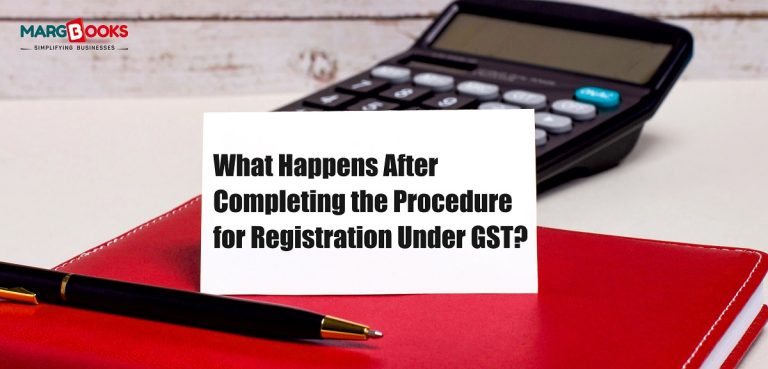The Goods and Services Tax (GST) has transformed the way businesses operate in India. For any business crossing the turnover threshold or engaging in interstate trade, completing the procedure for registration under GST is mandatory. But what happens once you receive your GSTIN (GST Identification Number)? Is that the end of the journey or just the beginning?
Let’s break down what comes next and how you can seamlessly transition into the post-registration phase, while also keeping your business compliant and efficient.
Understanding the Importance of GST Registration
Before diving into the post-registration steps, let’s quickly recap why businesses undergo the procedure for registration under GST:
- It makes your business legally recognised as a supplier of goods/services.
- You can collect tax from customers and pass on the credit of taxes paid on goods or services to purchasers.
- It opens up opportunities for business expansion across India, especially for those engaged in interstate commerce.
Once you’ve completed the registration and received your GSTIN, the next steps are crucial to ensure compliance and avoid penalties.
What to Do After Receiving GSTIN?
1. Start Issuing GST-Compliant Invoices
The first major step post-registration is to begin issuing GST-compliant invoices. These invoices must contain details such as:
- GSTIN of the supplier and the buyer (if applicable)
- Invoice number and date
- Description of goods/services
- Quantity, rate, and value
- Taxable value and applicable GST rate (CGST, SGST, IGST)
- HSN or SAC code
Using a reliable GST billing software like MargBooks can make this process easier. It automates calculations, helps generate error-free invoices, and stores all data securely in the cloud.
2. File GST Returns Regularly
Once registered, you’re obligated to file GST returns, even if there’s no business activity (nil returns). The frequency and type of return depend on the nature of your business and turnover.
Some common forms include:
- GSTR-1 (outward supplies)
- GSTR-3B (summary return of inward and outward supplies)
- GSTR-9 (annual return)
Tip: Missing return deadlines can lead to penalties and interest. That’s why many businesses opt for online billing software integrated with GST compliance features. It sends reminders, generates reports, and ensures timely submissions.
3. Maintain Proper Books of Accounts
Under GST, businesses must maintain accurate books of accounts for at least six years. These records should include:
- Sales and purchase registers
- Stock records
- Input Tax Credit (ITC) availed
- GST payments and return filings
Manually managing all this can be time-consuming and error-prone. MargBooks offers a comprehensive accounting and GST solution that not only tracks inventory but also automates bookkeeping, making audits and assessments hassle-free.
4. Update Business Signage and Documents
After GST registration, you are required to:
- Display your GST certificate prominently at your place of business.
- Include your GSTIN on all business documents like invoices, letterheads, and websites.
This builds credibility and shows customers and vendors that you’re a legitimate and compliant business.
5. Understand and Claim Input Tax Credit (ITC)
One of the key benefits of GST is the Input Tax Credit mechanism. You can claim credit for the GST paid on purchases and use it to offset your GST liability.
To do this effectively:
- Ensure your suppliers are also GST compliant and file returns.
- Reconcile your purchase records with GSTR-2A or 2B data.
With a smart GST billing software, MargBooks, reconciling ITC becomes easier. It matches your records with vendor filings automatically and flags discrepancies.
6. Stay Updated on GST Law Changes
The GST Council frequently updates rules, return formats, and tax rates. After completing the procedure for registration under GST, it’s crucial to stay informed.
Subscribe to official GST portals or use software solutions that push automatic updates. MargBooks, for example, is always in sync with the latest GST guidelines to ensure your business remains compliant without manual intervention.
Why MargBooks is a Smart Choice Post GST Registration?
Running a GST-registered business requires more than just filing returns. It demands ongoing compliance, accurate billing, and efficient record-keeping. This is where MargBooks proves invaluable.
Key Features of MargBooks:
- GST-compliant billing and invoicing
- Automatic GST return filing support
- Real-time data access with cloud technology
- Multi-user functionality for teams
- Customisable reports for better decision-making
Whether you’re a small business owner or managing multiple branches, this online billing software helps you stay on top of your financials without the usual headache.
Final Thoughts
Completing the procedure for registration under GST is just the first step in your compliance journey. What follows is a series of responsibilities that ensure your business remains legal, efficient, and trustworthy in the eyes of both customers and authorities.
Using tools, MargBooks not only simplifies day-to-day operations but also prepares you for future growth. From billing to return filing and everything in between, it keeps your business one step ahead in the GST era.




